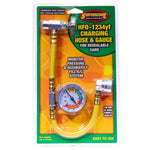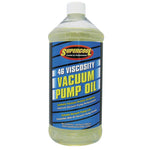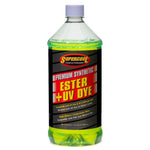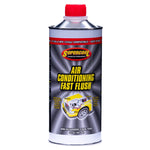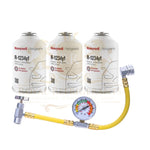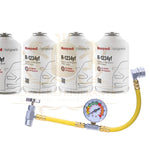You have no items in your shopping cart.
Everything You Need to Know About R513A for HVAC and Automotive Applications
As the HVAC and automotive industries continue to evolve toward more sustainable and environmentally friendly technologies, refrigerant selection has become a key focus. One of the most promising next-generation refrigerants is R513A, a hydrofluoroolefin (HFO) blend designed to replace older, high global warming potential (GWP) refrigerants such as R134a and R1234yf. With its excellent balance of performance, efficiency, and environmental responsibility, R513A is quickly gaining popularity in both HVAC and automotive applications.
In this article, we’ll explore everything you need to know about R513A — including its composition, properties, benefits, applications, and best practices for its use in modern cooling systems.
What Is R513A?
R513A is a non-ozone-depleting, low-GWP refrigerant blend composed of two primary components:
- R1234yf (56%) – A fourth-generation HFO refrigerant known for ultra-low GWP.
- R134a (44%) – A widely used HFC refrigerant known for reliability and performance.
This combination creates a refrigerant with a global warming potential of about 573, which is roughly 56% lower than R134a’s GWP of 1300. R513A is classified as an A1 refrigerant by ASHRAE, meaning it is non-toxic and non-flammable, making it a safe and stable choice for a variety of applications.
Why R513A Is Becoming More Important
Global efforts to reduce greenhouse gas emissions and transition away from high-GWP refrigerants have led to stricter regulations under frameworks like the Kigali Amendment to the Montreal Protocol. As a result, refrigerants like R134a and R22 are being phased down or eliminated, and alternatives like R513A are stepping in to fill the gap.
R513A offers a unique balance: it significantly reduces environmental impact while maintaining the performance characteristics needed for existing equipment. This makes it an attractive choice for both new systems and retrofit projects.
Key Properties of R513A
R513A’s performance characteristics make it a versatile choice for many cooling systems. Here are its most notable properties:
- ODP (Ozone Depletion Potential): 0
- GWP (Global Warming Potential): ~573
- ASHRAE Safety Classification: A1 (non-toxic, non-flammable)
- Temperature Glide: Approximately 0.3°F (nearly azeotropic)
- Oil Compatibility: Works with polyolester (POE) oils commonly used with HFC refrigerants
One of the key advantages of R513A is its near-azeotropic nature, meaning it behaves almost like a single-component refrigerant. This minimizes fractionation risks and makes charging and servicing systems simpler compared to zeotropic blends.

R513A as a Replacement for R134a
One of the main uses of R513A is as a drop-in or retrofit replacement for R134a in both HVAC and refrigeration systems. Its thermodynamic properties closely match those of R134a, making system conversion straightforward and cost-effective.
Advantages over R134a:
- Lower GWP: About 56% lower, reducing environmental impact and improving regulatory compliance.
- Similar pressure and capacity: Allows for easy system conversion with minimal modifications.
- Improved energy efficiency: Often delivers similar or slightly better performance.
- No Ozone Depletion: Contributes to sustainability and long-term environmental goals.
Because of these benefits, many equipment manufacturers are now designing new systems specifically optimized for R513A, while existing systems using R134a can often be retrofitted without major changes.
R513A in HVAC Applications
R513A is widely used in chillers, commercial air conditioning systems, and refrigeration units. Its properties make it ideal for medium-temperature cooling and comfort cooling applications. Key benefits include:
- Energy Efficiency: Comparable or improved performance compared to R134a, helping reduce operating costs.
- Easy Retrofit: Minimal system adjustments are needed, making the transition smooth and cost-effective.
- Regulatory Compliance: Meets many of the latest environmental standards and future-proofing requirements.
Because R513A is non-flammable and non-toxic, it’s especially suitable for use in large commercial HVAC systems where safety is a critical factor.
R513A in Automotive Applications
While R134a has long been the standard in automotive air conditioning systems, R513A is emerging as a viable alternative in certain automotive and transport refrigeration applications. Its low GWP and similar pressure characteristics make it an effective option for vehicles and refrigerated transport systems seeking more environmentally responsible solutions.
That said, adoption in the automotive sector is still growing, and in many newer vehicles, R1234yf is currently the preferred refrigerant due to its ultra-low GWP. However, R513A remains a strong contender in certain applications where a balance of performance, cost, and safety is required.
Best Practices for Using R513A
Whether retrofitting an existing system or installing a new one, following proper procedures is essential for optimal performance and safety:
- System Assessment: Verify compatibility of components and ensure the system is in good condition before conversion.
- Oil Considerations: Confirm POE oil compatibility; change oil if necessary.
- Recover Old Refrigerant: Safely remove and dispose of any existing refrigerant in compliance with environmental regulations.
- Evacuate and Recharge: Pull a deep vacuum and charge the system with R513A by weight.
- Leak Check and Performance Testing: Ensure the system is sealed and operating efficiently after the retrofit.
Proper installation and maintenance ensure that the full benefits of R513A — including improved efficiency and reduced environmental impact — are realized.
Conclusion
As the HVAC and automotive industries transition toward more sustainable refrigerants, R513A stands out as one of the most practical and efficient solutions. With its low global warming potential, zero ozone depletion potential, and close performance match to R134a, R513A offers a smooth path forward for both new systems and retrofits.
Its non-flammable and non-toxic nature further enhances its safety profile, while its ease of use simplifies system conversions. Whether you’re upgrading existing equipment or designing new solutions, R513A provides a future-ready option that meets environmental regulations without sacrificing performance.
As the demand for eco-friendly cooling solutions grows, R513A is poised to play a vital role in shaping the next generation of HVAC and automotive refrigeration technologies.
 English
English

